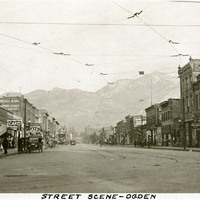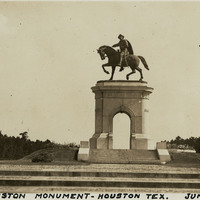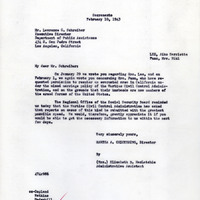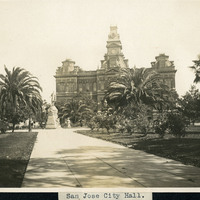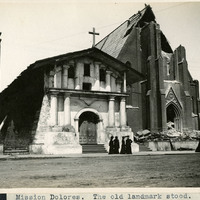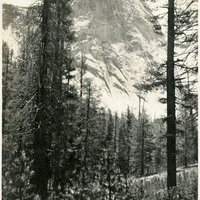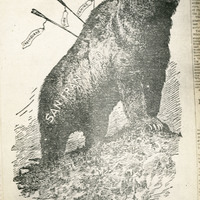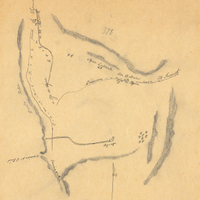Search All Items
- Filters:
- Type
- Still Image 4044
- Image 3895
- Text 436
- Text 50
- Image of the California Census from the records of the office of the California Secretary of State 1
- Language
- English 7937
- Spanish 494
- ENGLISH 4
- English 2
- census_013 1
- contra_costa_schedule_1_volume_1 1
Search Results 4181 to 4190 of 8533
-
Caption: "Street Scene -- Ogden," c. 1916. Street scene in Ogden, Utah, with mountains in the background. Tracks and lines for electric trolleys or streetcars can be seen, as well as automobiles and several local businesses.
Date: 1916
-
Caption: "Sam Houston Monument -- Houston Tex. June 8, 34." View of the San Houston Monument, a twenty-foot-tall bronze sculpture designed by Enrico Cerracchio and dedicated in 1925. The sculpture commemorates Sam Houston, a prominent soldier and politician who served as the first and third President of the Republic of Texas before its annexation to the U.S. Houston also served as Governor of Texas and as a U.S. Senator for both Texas and Tennessee.
Date: 6/8/1934
-
Correspondence from Martha A. Chickering to Richard H. Neustadt regarding exemption from incarceration in mixed marriage cases; See F3729_86_001 and F3729_86_003
Date: February 10, 1943
-
Caption: "San Jose City Hall," c. 1905, (Theodore Lenzen, Architect), was built in 1889 with a budget of $150,000. The brick and terracotta structure was demolished and replaced in 1958.
Date: 1905
-
Caption: "Mission Dolores. The old landmark stood," 1906. Mission Delores, the oldest intact building still standing in San Francisco today, suffered little damage from the 1906 earthquake. The parish church next to it was greatly damaged and rebuilt as the Mission Dolores Basilica, opened in 1918.
Date: 1906
-
No caption. Photograph of a forest in the foreground and a granite mountain in the distance, at an unidentified location.
Date: Undated
-
Caption: "Examiner Cartoon." Photograph of a cartoon that appeared in the San Francisco Examiner in the aftermath of the 1906 earthquake and fire. The cartoon shows a defiant grizzly bear representing San Francisco, pierced by three arrows labeled "Earthquake," "Fire," and "Famine." The word "UNDAUNTED!" appears above the bear.
Date: 1906
-
Hand-drawn sketch map of Land-valley of Temecula boundaries. Volume 2, page 83.
Date: 1844


